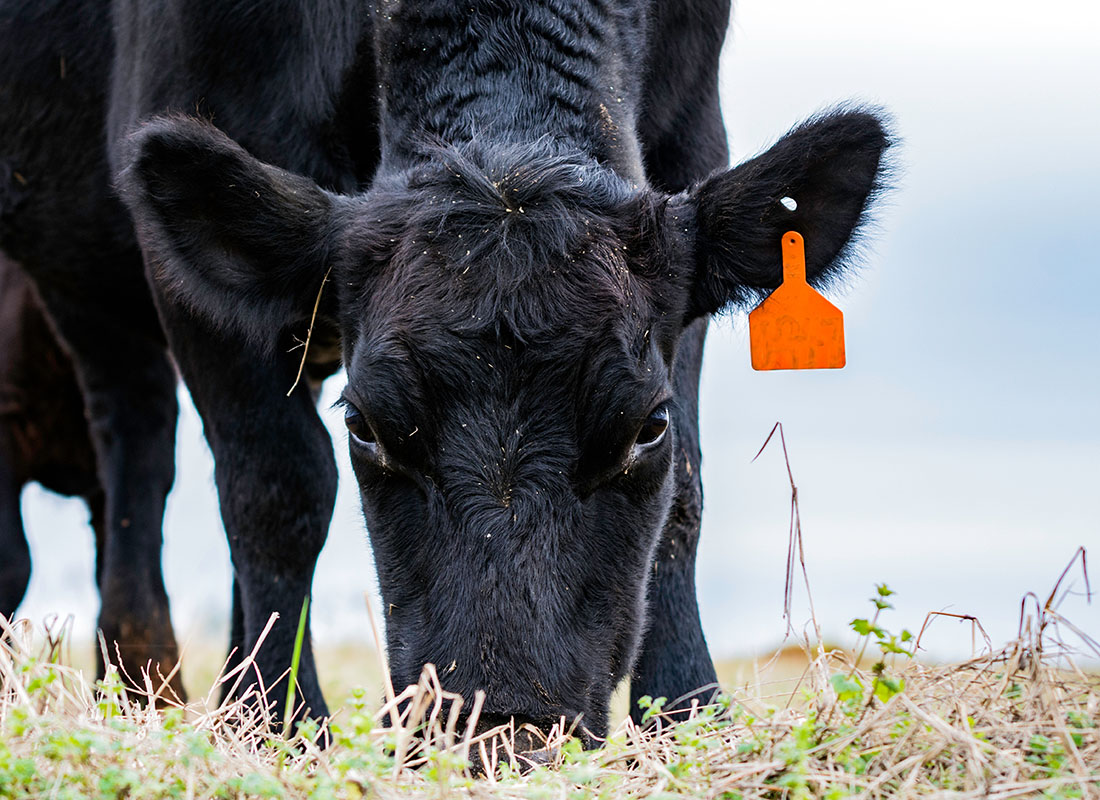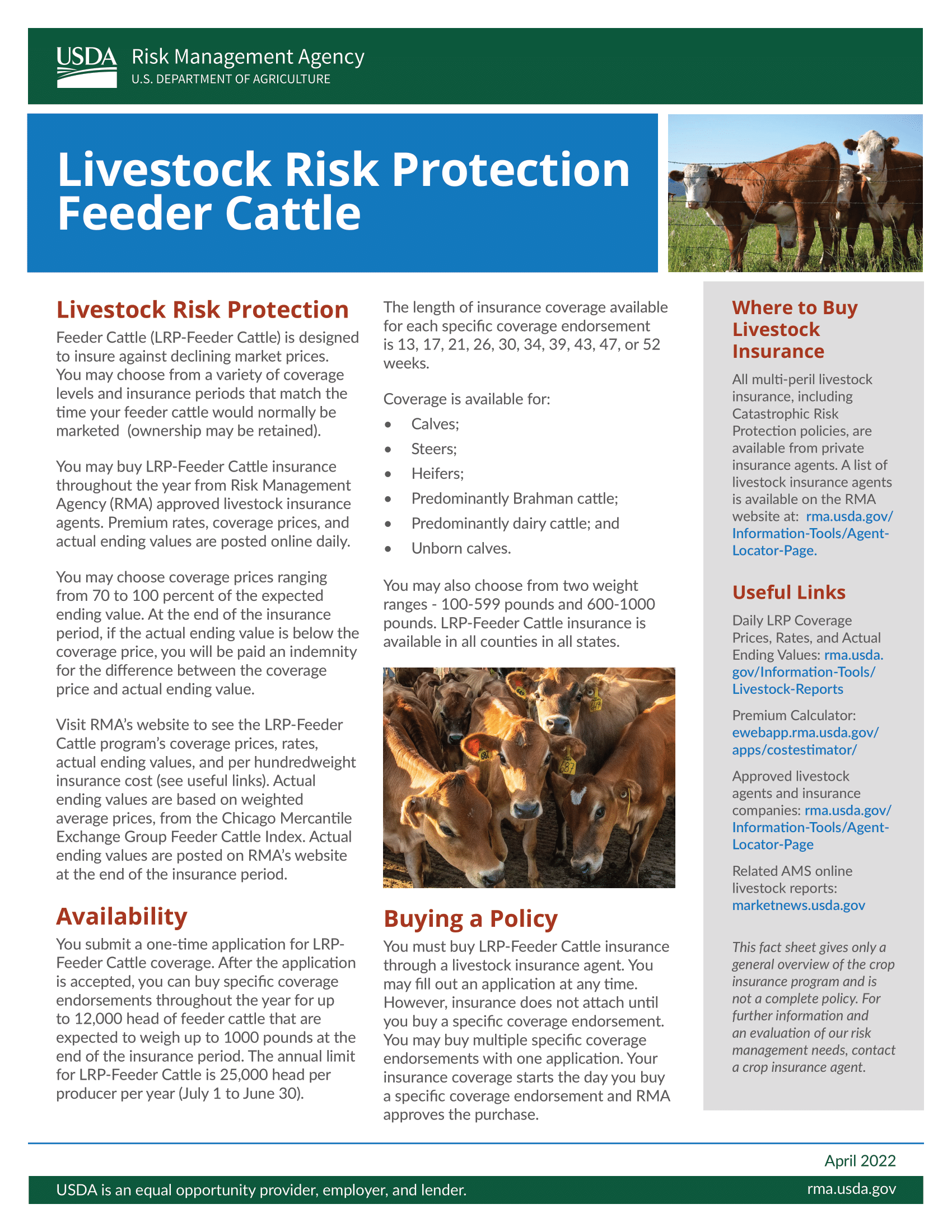Comprehending Livestock Threat Security (LRP) Insurance Coverage: A Comprehensive Overview
Navigating the realm of livestock risk defense (LRP) insurance policy can be a complicated venture for lots of in the agricultural industry. This type of insurance coverage offers a safeguard against market fluctuations and unexpected circumstances that might affect animals producers. By comprehending the details of LRP insurance, producers can make informed choices that may secure their procedures from monetary threats. From exactly how LRP insurance policy operates to the numerous protection options readily available, there is much to reveal in this extensive guide that can possibly form the way animals manufacturers approach threat monitoring in their businesses.

How LRP Insurance Works
Occasionally, comprehending the auto mechanics of Animals Danger Security (LRP) insurance can be complex, but breaking down exactly how it works can give clearness for farmers and ranchers. LRP insurance is a risk monitoring device developed to shield livestock manufacturers versus unanticipated rate decreases. It's vital to keep in mind that LRP insurance policy is not a revenue guarantee; instead, it concentrates only on rate threat security.
Eligibility and Protection Options

When it comes to insurance coverage choices, LRP insurance provides producers the adaptability to pick the insurance coverage degree, coverage duration, and endorsements that best suit their risk management needs. By understanding the eligibility criteria and insurance coverage options readily available, animals manufacturers can make informed choices to handle threat properly.
Benefits And Drawbacks of LRP Insurance
When examining Animals Threat Security (LRP) insurance coverage, it is vital for livestock manufacturers to evaluate the advantages and drawbacks fundamental in this risk management device.

One of the primary benefits of LRP insurance policy is its capability to offer security versus a decrease in livestock prices. This can help safeguard producers from monetary losses arising from market fluctuations. Furthermore, LRP insurance coverage supplies a degree of flexibility, permitting producers to customize coverage degrees and policy durations to match their details requirements. By securing an assured price for their animals, manufacturers can better manage danger and prepare for the future.
One restriction of LRP insurance coverage is link that it does not secure versus all kinds of dangers, such as condition break outs or natural calamities. It is critical for producers to thoroughly analyze their individual danger exposure and economic situation to identify if LRP insurance policy is the right danger management device for their operation.
Recognizing LRP Insurance Premiums

Tips for Maximizing LRP Benefits
Optimizing the benefits of Livestock Threat Defense (LRP) insurance policy needs tactical planning and proactive threat monitoring - Bagley Risk Management. To take advantage of your LRP coverage, consider the complying with suggestions:
Frequently Assess Market Problems: Remain informed concerning market fads and rate changes in the livestock sector. By monitoring these factors, you can make informed decisions concerning when to acquire LRP coverage to shield versus prospective losses.
Establish Realistic Protection Degrees: When picking insurance coverage degrees, consider your manufacturing prices, market price of animals, and possible dangers - Bagley Risk Management. Establishing realistic coverage levels makes certain that you are effectively protected without overpaying for unnecessary insurance
Diversify Your Insurance Coverage: Rather of relying entirely on LRP insurance coverage, consider expanding your risk administration approaches. Combining LRP with various other threat administration devices such as futures contracts or options can provide detailed protection versus market uncertainties.
Evaluation and Change Protection view On a regular basis: As market problems change, regularly evaluate your LRP protection to guarantee it aligns with your present danger exposure. Changing protection degrees and timing of acquisitions can aid maximize your threat security technique. By complying with these pointers, you can make the most of the benefits of LRP insurance policy and safeguard your animals operation against unpredicted risks.
Verdict
To conclude, animals threat protection (LRP) insurance is a valuable device for farmers to manage the monetary threats connected with their livestock procedures. By recognizing how LRP functions, qualification and coverage alternatives, as well as the benefits and drawbacks of this insurance policy, farmers can make educated decisions to safeguard their resources. By very carefully considering LRP premiums and implementing strategies to make best use of advantages, farmers can mitigate potential losses and guarantee the sustainability of their procedures.
Livestock producers interested in getting Livestock Danger Defense (LRP) insurance can discover a variety of qualification requirements and coverage options tailored to their certain livestock operations.When it comes to coverage choices, LRP insurance policy offers manufacturers the versatility to pick the insurance coverage degree, protection period, and endorsements that ideal fit their threat monitoring requirements.To grasp the details of Animals Danger Protection (LRP) insurance totally, understanding the elements affecting LRP insurance policy costs is vital. LRP insurance coverage costs are identified by numerous elements, consisting of the insurance coverage level selected, the anticipated rate of livestock at the end of the insurance coverage period, the type of livestock being insured, and the size of the protection period.Review and Change Coverage Routinely: As market problems change, occasionally review your LRP protection to guarantee it aligns with your current threat exposure.
 Ross Bagley Then & Now!
Ross Bagley Then & Now! Ashley Johnson Then & Now!
Ashley Johnson Then & Now! James Van Der Beek Then & Now!
James Van Der Beek Then & Now! Jane Carrey Then & Now!
Jane Carrey Then & Now! Kerri Strug Then & Now!
Kerri Strug Then & Now!